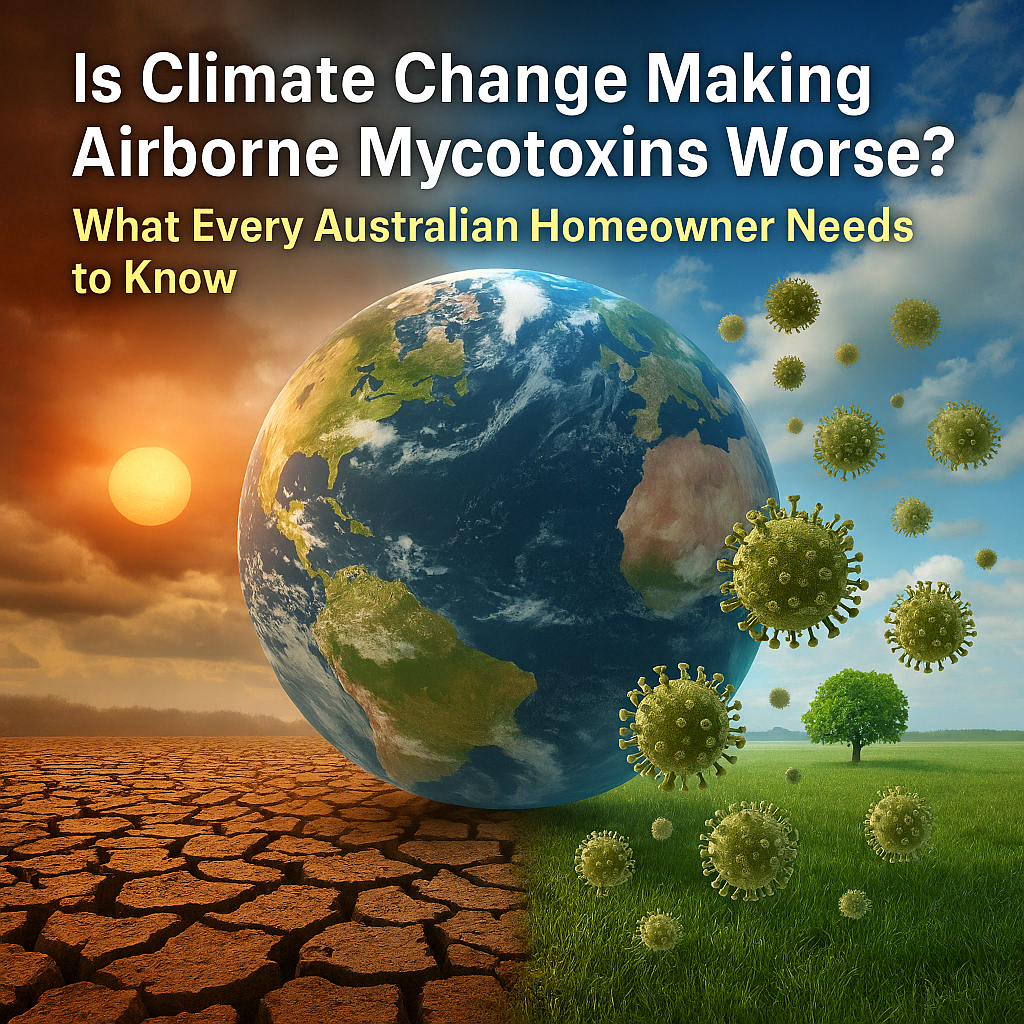
Are Airborne Aflatoxins Making You Sick? Why Testing Is Critical
Airborne aflatoxins are an often-overlooked danger in homes, businesses, and storage areas—especially those impacted by mould. These invisible toxins are more common than many realise and can pose serious risks to your health and property.
This blog, written for homeowners, renovators, business owners, and property managers—particularly those concerned about cool room cleaning in Sydney—will explain how aflatoxins become airborne, why they matter, and what you can do to protect your space and your family.
What Are Airborne Aflatoxins and Why Are They Dangerous?
Aflatoxins are toxic compounds produced by certain moulds, mainly Aspergillus flavus and Aspergillus parasiticus. These moulds thrive in warm, humid environments—conditions commonly found in poorly ventilated homes, water-damaged buildings, and contaminated storage facilities.
Once these moulds grow on organic materials like grains, seeds, or damp building materials, they can produce aflatoxins that become airborne as fine particles or dust. Unlike visible mould spores, airborne aflatoxins are not always easy to detect and can be inhaled without notice.
These toxins are extremely resilient, lingering in the air and settling on surfaces. Over time, exposure can lead to long-term health concerns, especially when not addressed professionally.
How Can Airborne Aflatoxins Affect Your Health?
You don’t need to eat contaminated food to be affected by aflatoxins. When aflatoxins become airborne, they can be inhaled, posing respiratory risks and potential damage to internal organs over time.
Health effects can include:
Chronic respiratory issues such as asthma or wheezing
Eye and skin irritation
Liver damage with long-term exposure
Compromised immune function
Increased risk of cancer in extreme cases
People with pre-existing conditions, children, and the elderly are especially vulnerable. That’s why early detection and professional remediation are crucial.
What Causes Mould to Release Aflatoxins into the Air?
When moulds grow unchecked, particularly in organic matter or high-humidity environments, they begin to produce mycotoxins like aflatoxins. As mould colonies mature, they dry out and break apart, releasing tiny spores and fragments into the air.
Everyday activities like cleaning, moving stored grains, or disturbing damp building materials can send these particles airborne. In cool rooms, storage areas, or underfloor spaces where moisture and organic matter build up, aflatoxins can quickly accumulate in the air.
Environmental conditions like poor ventilation, water leaks, and humid climates—such as those in Sydney—can worsen the problem.
How Can You Test for Airborne Aflatoxins in Your Home?
Testing for airborne aflatoxins isn’t something you can do with a basic home mould kit. These toxins are microscopic and require advanced testing using specialist air sampling techniques and laboratory analysis.
The Mould Group offers professional airborne toxin testing, using cutting-edge equipment to:
Detect the presence of aflatoxins and other mycotoxins
Identify specific mould species
Determine the extent of airborne contamination
This testing is especially critical after water damage or when persistent health issues are present despite cleaning efforts.
What Are the Best Ways to Remove Airborne Aflatoxins?
Standard cleaning methods aren’t enough to eliminate airborne aflatoxins. Because these toxins can become embedded in porous surfaces and ventilation systems, professional remediation is essential.
The Mould Group uses industry-certified protocols including:
HEPA-filtered air scrubbing
Mould source removal and decontamination
Negative air pressure containment
Safe removal of contaminated materials
This ensures that not only is the visible mould gone, but the toxic particles that could cause harm are fully addressed.
How Can You Prevent Aflatoxin Contamination?
Prevention is the best line of defence. Controlling indoor humidity and maintaining cleanliness in food storage or cool rooms can go a long way in preventing aflatoxin-producing moulds from taking hold.
Prevention tips:
Use dehumidifiers in damp spaces
Fix leaks and water damage quickly
Store grains and foodstuffs in dry, sealed containers
Regularly clean and maintain cool rooms
Schedule annual mould inspections
Ongoing monitoring by experts like The Mould Group ensures any emerging issues are caught early.
Who Is Most at Risk from Airborne Aflatoxins?
Certain groups are more susceptible to airborne aflatoxins and their health effects:
Young children and infants: More sensitive respiratory systems
Elderly individuals: Weaker immune response
Asthma sufferers: Increased likelihood of respiratory reactions
People undergoing renovation: Disruption of mould-contaminated materials
Workers in food storage or agriculture: Frequent exposure to stored organic matter
Property owners in Sydney, especially those managing cool rooms or industrial spaces, should take extra care.
How Do Aflatoxins Compare to Other Mould Toxins?
While aflatoxins are a specific type of mycotoxin, they are among the most toxic. Other mycotoxins may also become airborne, but aflatoxins are particularly resilient and dangerous due to their impact on human health, especially liver function and immune response.
Understanding the specific type of toxin present in your environment is critical, which is why professional testing is essential.
If You Suspect Airborne Aflatoxins in Your Home, Don’t Wait
Contact The Mould Group today for expert testing and remediation. Your health—and your family’s—depends on it.
📝 Next blog in this series:
Inhalation Risks: How Breathing in Aflatoxins Affects Health
Recent Post
Emerging Research
Are Airborne Aflatoxins More Dangerous Than We Thought? Emerging Research Reveals the Unknowns Introduction Mould is not just a cosmetic nuisance. It’s a living organism that, when left unchecked, releases toxic by-products into your environment. One of the most concerning of these by-products is aflatoxin—a dangerous type of airborne mycotoxin. While we know that ingesting […]
Climate Change and Airborne Mycotoxins
Is Climate Change Making Airborne Mycotoxins Worse? What Every Australian Homeowner Needs to Know Introduction Mould is more than just an unsightly problem—it’s a biological hazard that can compromise your health and damage your property. As it grows, it can release dangerous toxins into the air called mycotoxins. When these mycotoxins become airborne, they can […]
Airborne Aflatoxins and Animals
Are Your Pets or Livestock at Risk? Understanding Airborne Aflatoxins and Animals Introduction Mould is not just a concern for homes and people—it also poses a serious threat to animals. When mould spreads in barns, sheds, feed storage areas, or even inside homes, it can release aflatoxins—a dangerous type of airborne mycotoxin. These toxins can […]




